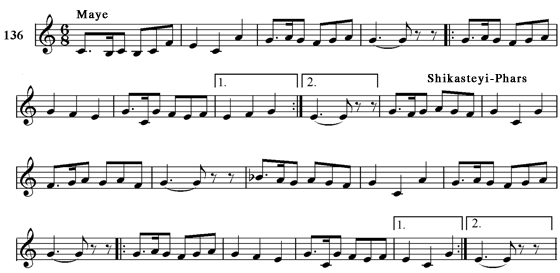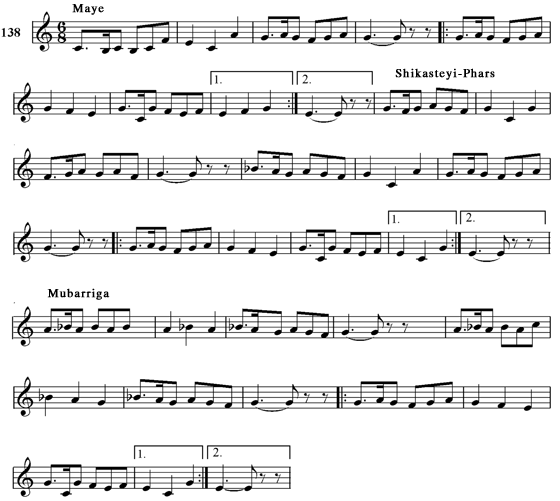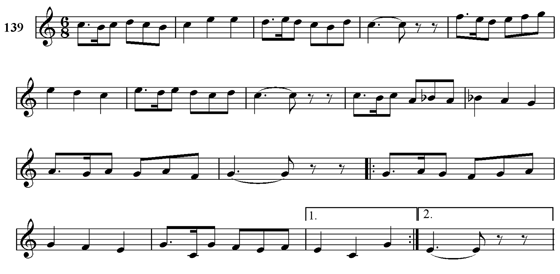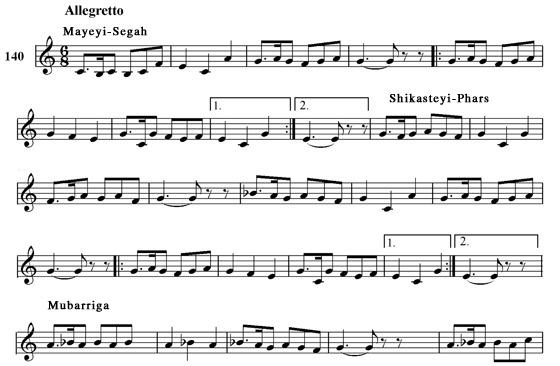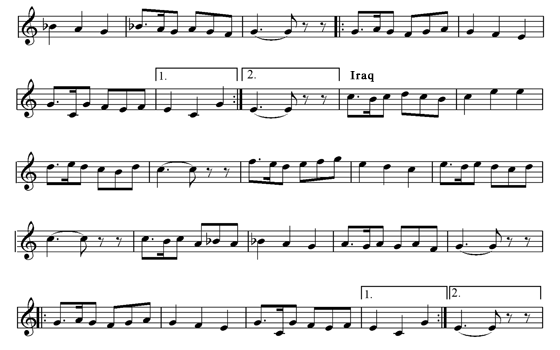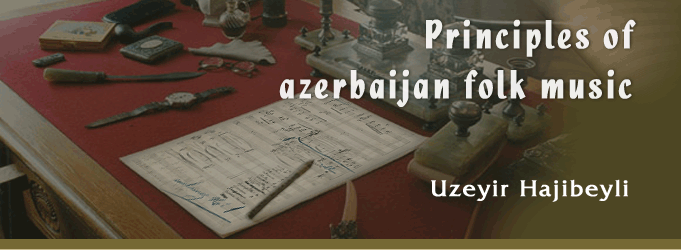

Part two
PRINCIPLES OF COMPOSING MUSIC
IN AZERBAIJANI MODES IN FOLK STYLE
I. STRUCTURE OF PERFECT QUARTES6. Composing melodies in the mode "Segah"
While composing melodies in the mode "Segah" one should keep to the rules shown for the mode "Shur" in the corresponding chapters.Below, an example is given to the first section of the mode called "Maye-Segah". "Maye-Segah" requires the conclusion of the first phrase in the beginning of the 2-nd bar in the tonic and the response phrase in the beginning of the 4-th bar with a half cadence. The response sentence in the beginning of the 8-th bar ends in the tonic and requires its own precise repetition in a varied form.
The rules of building response sentences are the same as in the mode "Rast1".
An example of the section "Maye-Segah".
A section called "Shikasteyi-Phars" follows "Maye-Segah". "Shikasteyi-Phars" requires the conclusion of the first phrase in the beginning of the 2-nd bar and the second phrase in the beginning of the 4-th bar in the main tone quinte. The first sentence of "Shikastyi-Phars" requires its own repetition in a varied form, after which it is combined with the response sentence of "Maye-Segah".
An example to the section "Shikasteyi-Phars":
1-st expansion of the composed melody:
Then comes a section called "Mubarriga". "Mubarriga" requires the first phrase to begin with a supertonic of the main tone quinte. Conclusion of the first phrase in the beginning of the 2-nd bar falls very often on the unstable tone (supertonic of the main tone quinte). The second phrase ends in the 4-th bar with a stop in the main tone quinte, after which this sentence is repeated in a varied form.It is necessary to combine this sentence (with its variant) with the response sentence of "Maye-Segah".
2-nd expansion of the composed melody:
Then comes the section "Iraq". This section, as in the mode "Rast", shifts the main tone an octave higher, as a result of which the scale of the mode "Segah" expands.
"Iraq" requires the first phrase in the beginning of the 2-nd bar to end in the main tone octave. The response phrase ends in the same tone, too. Then it is necessary to construct a response sentence, which in the beginning of the 8-th bar also ends in the main tone octave.
In order to response to the tonic of "Segah" it is necessary to resort to "Garayi" making the first stop in the main tone quinte, and the last stop - in the modal tonic of "Segah":
It is desirable to repeat "Maye-Segah" in conclusion.
An example of composing in the mode "Segah":[ Segah: pages 1 2 ]


